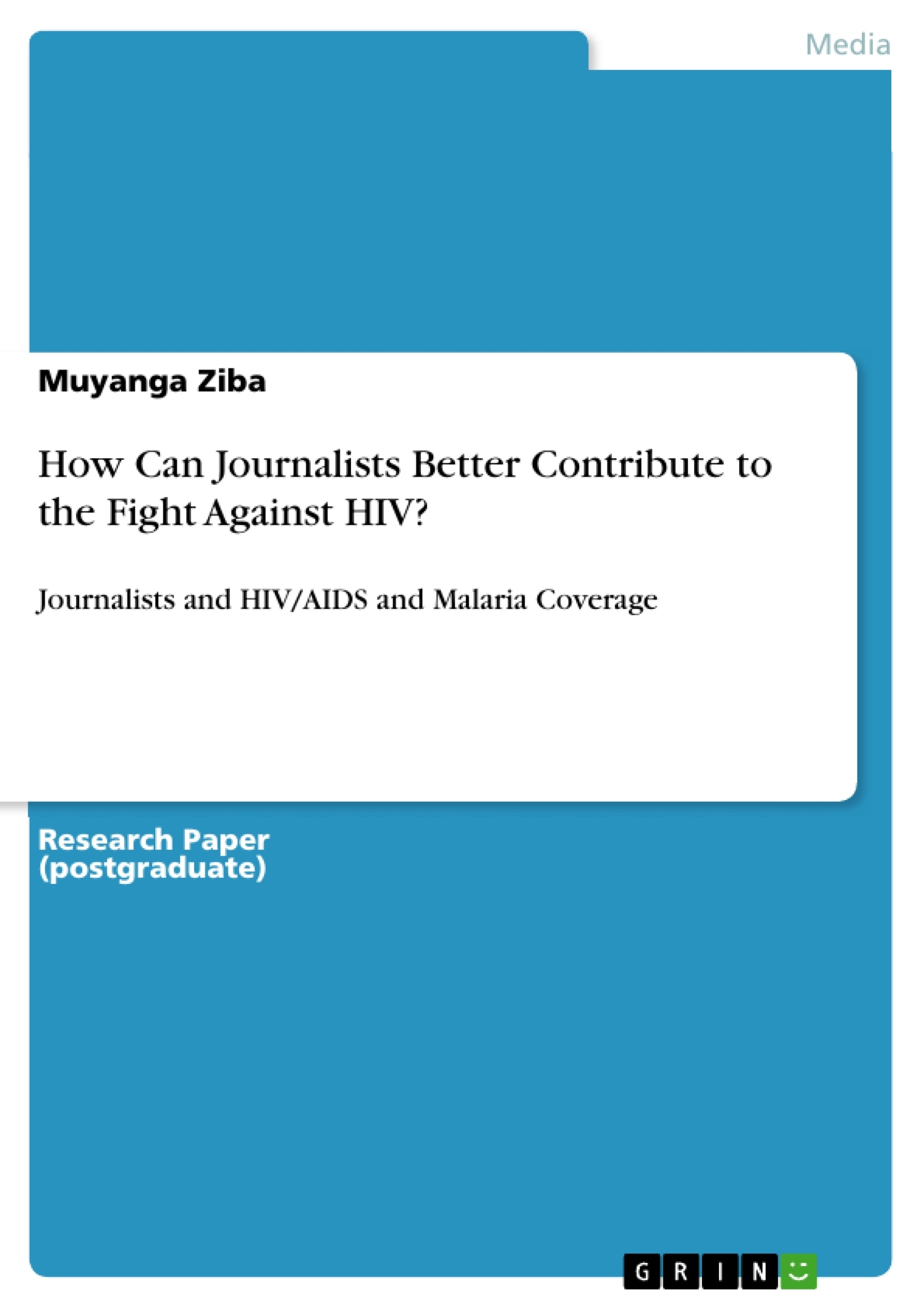This study is a contribution to development in the field of journalism in Malawi and neighbouring countries of Malawi, Zambia and Tanzania, at a time of growing concern about the developmental challenges being posed by the spread of the HIV/AIDS pandemic in Southern Africa.
For Malawi in particular, it examines the struggle against the pandemic that has been underway since 1993 and how the interventions to check its spread have included calls for projects and information that would lead to behaviour change and lowering of infection rates. The campaign along this line has targeted the media, among key stakeholders.
To gauge the extent to which journalists are playing their role in the campaign in question, a survey was carried out in Malawi and then also in Zambia and Tanzania. This revealed that journalists in all the three countries covered are currently somewhat hampered in their advocacy of HIVAIDS issues, and that is due to several factors. These include the dearth of communication research in the region, as well as the related lack of relevant education and training opportunities for journalists. They also encompass the absence of laws granting journalists access to relevant government information about epidemiology; the culture of silence which surrounds the exchange of news about HIV/AIDS related deaths and competition in the media posed by popularity of stories about politics, economics and religion.
As a way forward, it is proposed and recommended that journalists should be linked to projects that directly address the needs of local communities in the national campaign against HIV/AIDS. These would be projects like those which incorporated the citizen participation tradition, by empowering even the least respected members of the society. For the media, these include community radio stations, and vernacular newspapers. For people at village or grassroots level, these are important channels of information about HIV/AIDS and other major killer diseases, to which the common man is able to directly relate.
The study also advances the need for a course or course module on Health Journalism to be offered by an appropriate school of journalism within the countries. Through such a course, journalists would be equipped with skills to enable them to cover HIV/AIDS issues effectively and comprehensively.
Inhaltsverzeichnis (Table of Contents)
- Aim of the Study
- Objectives of the Study
- The Present Study and its Methodology
- Findings
- The results of Interviews with Journalists
- Assessment of Findings from Editors
- The Views from Policy Makers
- Overview of Survey Findings
- Conclusion
- Challenges the Media Has Been Encountering in Covering HIV/AIDS
- Towards a Training Programme for Journalists
- Conclusion and Areas for Further Research
- Conclusion
- Areas for further research
Zielsetzung und Themenschwerpunkte (Objectives and Key Themes)
This study aims to examine the role of journalists in combating the HIV/AIDS pandemic and their contribution to national development by bridging communication gaps and promoting behavioral change. The research focuses on journalists in Malawi, Zambia, and Tanzania, assessing their knowledge, experiences, and challenges in covering HIV/AIDS.
- Journalists' knowledge and understanding of HIV/AIDS.
- The challenges faced by journalists in covering HIV/AIDS, including access to information, training, and resources.
- The role of community radios and vernacular newspapers in disseminating information and promoting behavioral change.
- The need for a training program for journalists to enhance their capacity to cover HIV/AIDS effectively.
- The importance of communication research and its role in informing the media's response to HIV/AIDS.
Zusammenfassung der Kapitel (Chapter Summaries)
The study begins by outlining its objectives and methodology, which included interviews with journalists, editors, and policy makers, as well as focus group discussions. The findings reveal that journalists in all three countries have limited knowledge of HIV/AIDS and face significant challenges in covering the topic, such as lack of training, inadequate resources, and restricted access to information. While there is a general awareness of HIV/AIDS, the prevalence rate remains high, highlighting the need for effective communication strategies and research.
The study further examines the role of community radios and vernacular newspapers in reaching rural communities and promoting open dialogue about HIV/AIDS. The findings highlight the importance of these mediums in facilitating communication and promoting behavioral change at the grassroots level.
Finally, the study proposes a comprehensive training program for journalists focused on health journalism and covering HIV/AIDS. The program aims to equip journalists with the necessary knowledge, skills, and ethical understanding to effectively report on HIV/AIDS and contribute to the fight against the pandemic.
Schlüsselwörter (Keywords)
HIV/AIDS, journalists, media, communication, behavioral change, community radios, vernacular newspapers, training program, health journalism, access to information, knowledge gaps, Malawi, Zambia, Tanzania.
- Quote paper
- Muyanga Ziba (Author), 2012, How Can Journalists Better Contribute to the Fight Against HIV?, Munich, GRIN Verlag, https://www.grin.com/document/312488



